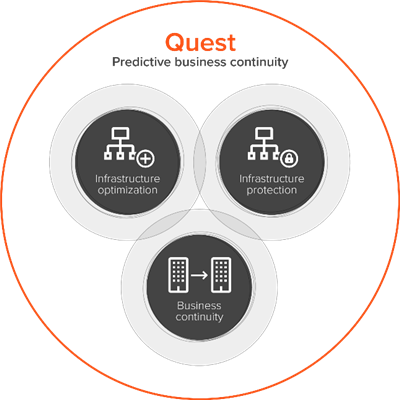Most of what I first learned about disaster recovery and business continuity came from my first car: a 1969 Pontiac GTO that my grandmother helped me buy with a few extra bucks.
“Are you taking as good care of that car as I would if it were mine?” she would ask.
“Oh, yeah, sure, Grandma. It runs great and I always drive it carefully.” (Fingers crossed behind my back...)
“I hope so. The more you know about that car today, the fewer big problems you’ll have tomorrow.”
Uh-huh.
I learned about disaster recovery because, well, with a four-barrel carburetor and 400 horsepower under the hood, growing up on Long Island I managed to find a few disasters I had to recover from. Like when I forgot to check the level of the water in my radiator for a couple of months and got a surprise when the car overheated and I got stuck on the side of the road. And remember, there were no cell phones in those days.
Or when I was racing my friend to the movies one night and my timing belt broke. I just came to a sputtering halt on the side of the road. Again, no cell phone.
My perspective was, “How are you going to know what it can do unless you push it?” That’s how I learned about disaster recovery. It kind of becomes a way of life.
And I learned about business continuity because I relied on the car to get to school and work. I needed to know that when I stuck the key in the ignition and turned it, the car was going to run, no matter what I had put it through the last time I’d driven it.
Infrastructure monitoring, management and optimization—Like a GTO
Before there was IT infrastructure, gearheads like me used to monitor, manage and optimize cars.
If you had a muscle car like a GTO—or even an old car that needed tinkering—your eye was always on the dashboard and your ear was always on the power train. You managed fluid levels and checked your tires for wear. And on the weekends you optimized by adjusting the valves, tuning the carburetor and tweaking the timing. Getting filthy on the weekends and fixing problems were badges of honor.
Getting your hands dirty in IT infrastructure is different. You quickly realize it isn’t just one engine and transmission to manage, but hundreds or thousands of them. You can’t monitor infrastructure strictly by feel and by checking the tachometer and the oil gauge now and then. And you certainly can’t idle your users by jacking up your infrastructure in the driveway while you run to the parts store for a new wheel bearing.
Business continuity and disaster recovery are the real thing when it comes to IT infrastructure. You don’t need to ask yourself, “How are you going to know what it can do unless you push it?” because your users are pushing your infrastructure all the time. If you’re running with inadequate resources (CPU, memory, storage, network), you’ll find out in a hurry. That’s why you monitor, manage and optimize.
A formula for predictive business continuity
Disaster recovery, business continuity and keeping a 1969 Pontiac GTO alive all have one important thing in common: You always wish you had a way of anticipating the next big problem so you can avoid it.
And whether you’re bouncing from one monitoring tool to another or crawling under your car two hours a day, that’s never easy.
We’ve published a new white paper called Achieving Predictive Business Continuity. It summarizes our experience and understanding that the more effort you devote to IT infrastructure optimization and protection today, the fewer big problems you’ll have tomorrow, to paraphrase Grandma.
Predictive business continuity is an approach IT organizations can follow that both optimizes and protects the infrastructure, to mitigate the risk of system downtime and business disruption. The goal of monitoring, managing and optimizing infrastructure is to ensure that available resources are always on par with demand.
Next steps
Now that I’ve described the role of infrastructure optimization, I’ll describe the role of data protection in my next post. Meanwhile, download our white paper, Achieving Predictive Business Continuity, to introduce yourself to predictive business continuity and see how it can fit into your organization. Once your IT team gets on the path to predictive business continuity, it can free up staff time and budget for digital transformation, reduce CapEx and OpEx, accurately predict future costs and prevent problems before they arise.
And my GTO? I don’t have it anymore. I pushed it hard enough to find out what it could do, and after a few close calls, moving violations and accidents I realized it was a bad idea and sold it. Besides, IT resources like CPUs, memory and storage are a lot less bulky, dirty or expensive as automotive resources like engines and transmissions, so it was time to turn the page.
Grandma understood.
But I sure miss that car . . .
Photo credit: Greg Gjerdingen CC 2.0




-

leximaddison
-
Cancel
-
Up
0
Down
-
-
Reply
-
More
-
Cancel
Comment-

leximaddison
-
Cancel
-
Up
0
Down
-
-
Reply
-
More
-
Cancel
Children